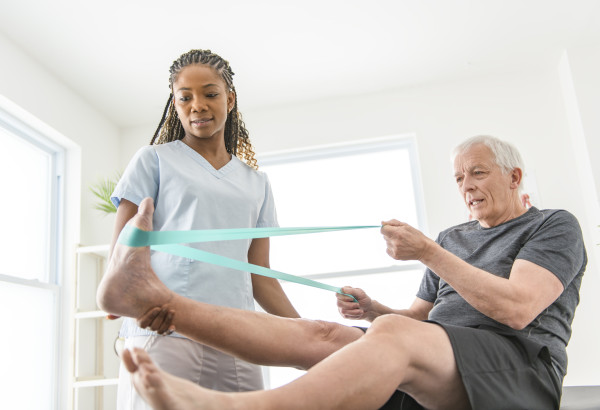Manual Therapy


Manual therapy encompasses a variety of hands-on treatment techniques including massage, soft tissue and joint mobilization, scar massage, and transverse friction massage. A physical or occupational therapist will use manual therapy by using their skilled hands to improve soft tissue and joint mobility and in the decrease pain.
What is the treatment?
A skilled therapist or therapist assistant, by taking confident control of your body part and moving it in specific directions within your pain tolerance, can achieve the goal of improving your range of motion. Those same hands from the same clinician could be used in numerous other manners to decrease your pain and/or diminish muscle tenderness. Those muscle pains can be quite limiting, and your therapist is trained and skilled to help resolve them. This addresses the stiffness and loss of motion caused by injuries and surgeries. Clinical decisions that determine the use of manual therapy are best provided for individual patients on the provider level, instead of using a “one-size-fits-all” approach. There are a variety of manual techniques that can be utilized to achieve a patient’s goals. The primary techniques include traction, strain/counter strain, soft tissue mobilization, active release techniques, joint mobilizations, and muscle energy techniques. Our therapists have often received additional certifications in manual therapy approaches in efforts to maximize our patients’ outcomes. Research has shown that best treatments for orthopedic conditions and musculoskeletal injuries are a combination of manual therapy and targeted exercise. These principles are at the core of our treatment philosophy and are part of the reason why we have such good outcomes for our patients.
How is it performed?
Specific manual therapy techniques are well known to improve circulation and improve healing rates. These are exactly the types of skills physical and occupational therapy professionals are counted on to perform after injury or surgery to help you recover quickly and get back to your prior functional status. Manual therapy can improve recovery rates for sprain, strains, tendinosis, etc. Retrograde massage is exceptionally effective at helping to diminish edema.
Pain is often the chief complaint of patients seeking therapy. Your therapist can be relied upon to address your pain using an array of manual therapy techniques. Trained and skilled in the art of massage, joint mobilization, and literally dozens of other manual therapy techniques, your therapist will use their hands to help manage your pain. Some of those techniques are gentle; others start gentle and build to deeper and more aggressive techniques based on your tolerance and response to treatment.
What are the benefits?
Before conducting functional training with you, your therapist may use their manual skill set to help decrease your pain and improve your range of motion. With your joint moving more freely, you will appreciate that new movement and apply it into a functional movement pattern. Exercises which were difficult or even impossible are often achieved after manual therapy techniques have been performed. This allows your therapist to take that new movements into functional tasks, to improve body mechanics, balance, and strength.
What Conditions can it Treat?
- Muscle strains
- Arthritis
- Chronic pain
- Degenerative joint disease
- Joint Restrictions
- Post-surgical tissue restrictions
- Fibromyalgia
- Sprains
- Whiplash
- Lumbago
- Trigger Points

